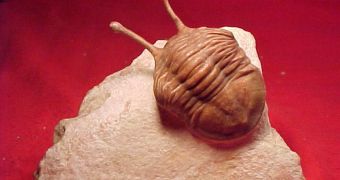According to the results of a new scientific investigation, it would appear that understanding the timeline of evolution is very tightly linked to the way we interpret the fossil record, and the molecule clocks of organisms we discover. The data was extracted from a new study of dating techniques.
Some of the most important questions researchers have always asked are related to the way the planet evolved, and to how life evolved here. At this point, we have a fairly good grasp of things, but most theories were extracted from, or revolve around, measurements of time.
When analyzing fossils extracted from rocks, determining their age is the most critical aspect of the research. If they are old enough, then they may be used to cover some holes in our understanding of how certain species, classes, groups, families or orders of lifeforms evolved.
Due to the fact that species come in sheer number, it is very difficult to trace back all of their individual origins, and develop a genealogy tree containing all of Earth's lifeforms. But dating methods allow us to come very close to this objective, providing the most relevant information under the circumstances.
Earth’s evolutionary clock is an important measure of how life developed, and it too can be improved by refining dating techniques. By doing so, experts can determine with increased accuracy how Earth’s environment and living world have co-evolved over millions of years.
Investigators from the University of Bristol, in the United Kingdom, published their newest conclusions in the latest issue of the top scientific journal Biology Letters. Their focus was determining how molecular clocks and the fossil record aligned over the course of history.
What the team found was that discovering how the hands of molecular clock tick is entirely dependant upon cross-references to the fossil record. Most molecular clock studies attempting to provide a timeline for life’s history have thus far disregarded this connection.
“Without being able to place events of the past on a timeline, it becomes difficult to understand how the planet’s environment and the living world have co-evolved,” UB School of Earth Sciences and lead study researcher Rachel Warnock explains.
“Ultimately, the past provides a key to understanding the present and the future of the planet. If we want to piece together the crucial environmental events that have shaped the planet, it is vital that biologists and palaeontologists continue working together,” she adds.
“Our next aim is to stimulate further collaboration between palaeontologists and biologists and continue building our vision of Earth’s mysterious past,” the UB expert concludes.
The work was made possible by the Natural Environmental Research Council and the Biotechnology and Biological Sciences Research Council (BBSRC). The University of Bristol Advanced Computing Research Center carried out the related computational work.

 14 DAY TRIAL //
14 DAY TRIAL //